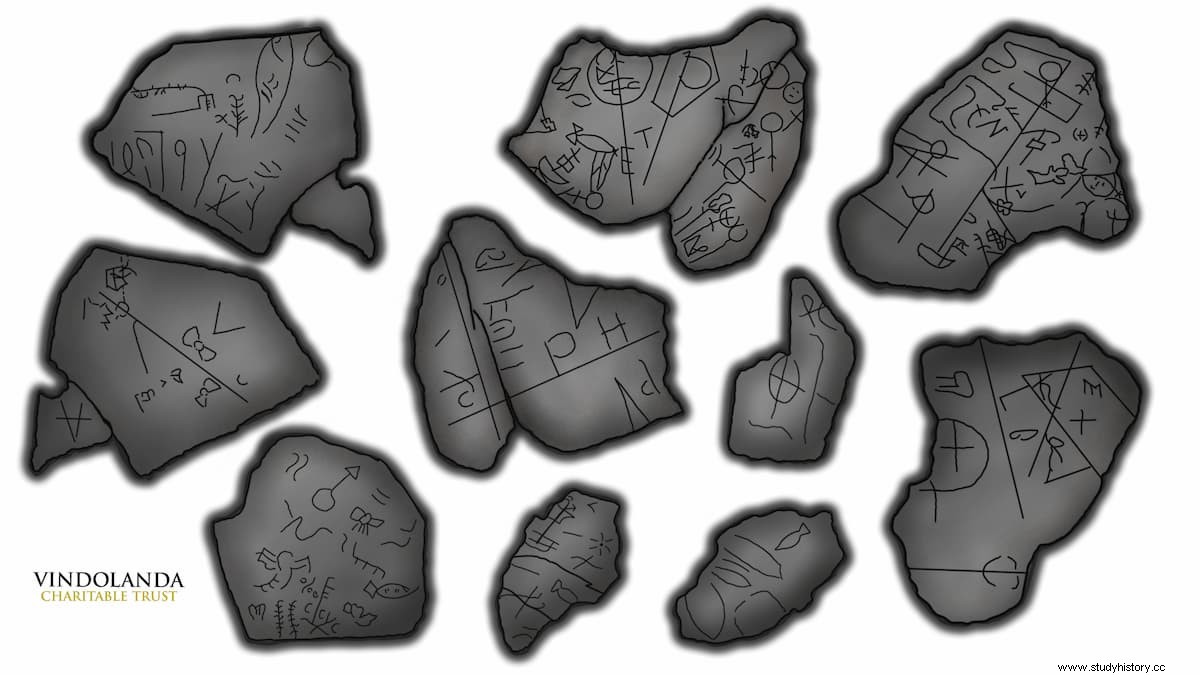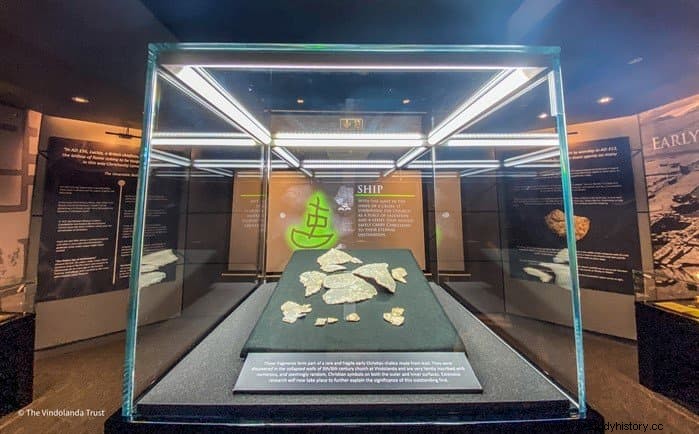A recent discovery at Vindolanda has shed new light on the period of the 5th and 6th centuries in Britain. Buried under the remains of a rubble-strewn building, which archaeologists identify as a 6th-century Christian church, were 14 fragments of an incredibly rare Christian lead goblet or chalice.
Although in very poor condition due to its proximity to the ground surface, each vase fragment was found to be covered in lightly engraved symbols, each representing different forms of Christian iconography of the time. The combination of so many of these engravings and the context of the discovery makes this artifact one of the most important of its kind to come from early Christianity in Western Europe. It is the only surviving partial chalice from this period in Britain and the first such artifact to come from one of the Roman forts on Hadrian's Wall.

The markings appear to have been added, both to the outside and inside of this chalice, by the same hand or artist and although they are now difficult to see with the naked eye, with the aid of specialist photography the symbols have been carefully recorded and work has begun on deciphering its meaning.
The engravings include some well-known symbols from the early church, such as ships, crosses, the Chrismon, fish, a whale, a bishop, angels, members of a congregation, letters in Latin, Greek, and potentially Ogam.

Scholarly analysis of the artifact is ongoing by Post-Roman specialist Dr David Petts of Durham University, who has taken the lead in the investigation and commented:This is a really exciting find from a relatively short period of time. understood from the history of Great Britain. Its apparent connections to the early Christian church are incredibly important, and this curious vessel is unique in a British context. It is clear that further work on this discovery will tell us much about the development of early Christianity in the early medieval period.
The chalice now forms the centerpiece of a new exhibition at the Vindolanda museum highlighting Christianity and recent periods of occupation at the site, opening Monday, August 31, 2020.
Director of Excavations and CEO of Vindolanda, Andrew Birley led the team working on the discovery site:we are used to our impressive Roman remains at Vindolanda surprising us with discoveries such as ink tablets, boxing gloves, boots and shoes, but that an object like the chalice survives in the post-Roman landscape is just as significant. Its discovery helps us appreciate how the place of Vindolanda and its community survived beyond the fall of Rome and yet remained connected to a spiritual successor in the form of Christianity that, in many ways, was as broad and transformative as it was. what had come before.

In 2019, a 3rd century board of the Roman game 'Ludus latrunculorum' was found in Vindolanda, and this same year 2020 a 2nd century leather toy mouse. The Vindolanda site is about two kilometers south of Hadrian's Wall, and was one of the Roman forts, where the legionnaires who guarded it lived.
